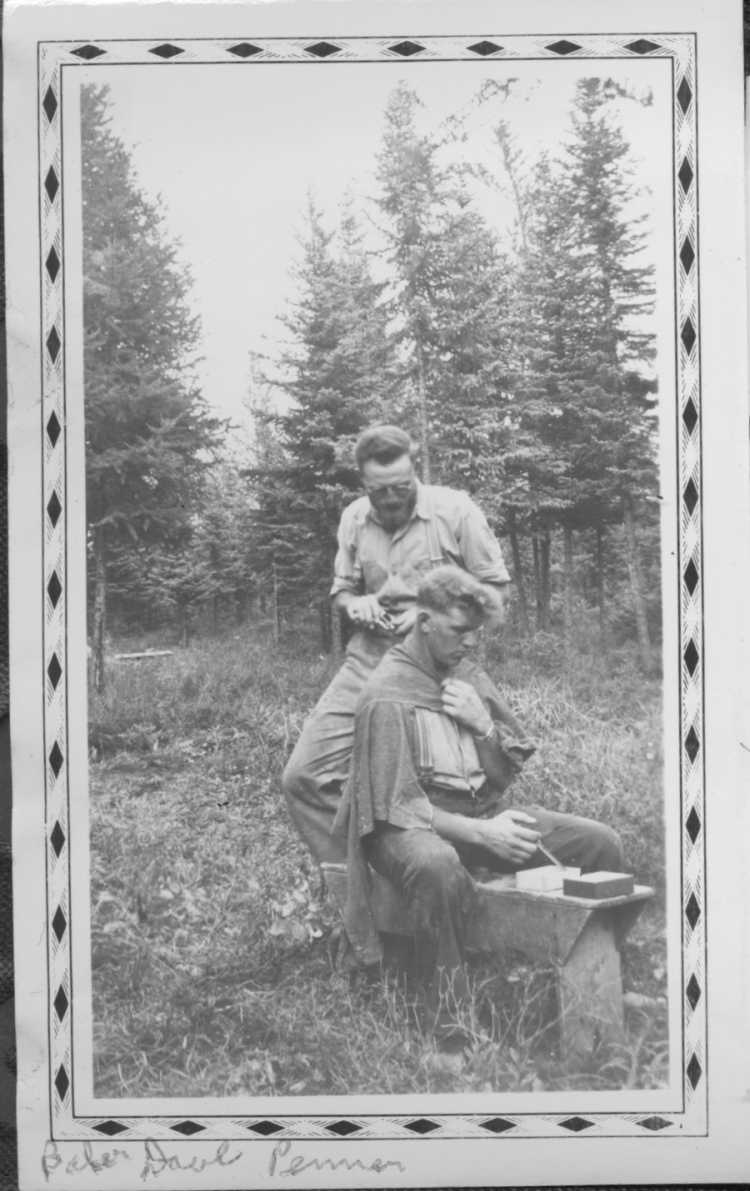Page
1 | Page 2 | Page
3 | Page 4 | Page 5 | Page
6 | Back to Life at Camp Page
Haircuts
During
the Second World War, most Mennonite men wore their hair short.
This meant frequent haircuts during their time at camp. The barber
was usually a CO with little or
no experience. Henry
Martens tells the story of the camp barber in Jasper National Park
.
“Our
camp barber charged ten cents per haircut, with no extra charge
for clipper cut or pulled off hair. One day a fellow CO got into
the chair and asked for a completely bald hairstyle. The clipper
promptly went down the middle and exposed a bald scalp dividing
two halves of the sphere.
“‘By
the way,' said the customer, ‘I have only five cents left, but
I'll pay the balance when we get our paycheck.'
‘No
problem,' replied the barber, ‘you'll get half a haircut now and
the balance next payday.' (Payday - $7.50 – came every two weeks.)
So for the balance of the days until payday, one of our working
partners named Peter looked like a walking tower of Pisa .' [ASP,
127]
 |
 |
| Dave Penner giving a hair cut at Clear Lake |
This barber scene includes a 3-piece orchestra |
The
COs were at the mercy of the barber. If he wanted to charge a lot
of money, the men had no option but to pay if they wanted a haircut.
COs got fifty cents per day. In Jacob Loeppky's camp, men had to
work half a day to pay for a hair cut.

“Our
hair cutting chair was a beauty. Dave Dueck was a whiz at carpentry.
The back would fold backwards when you needed a shave. A haircut
and shave cost 25 cents. Imagine working four hours [to earn]
25 cents [to pay for a haircut!]” [ASM, 224-225]
At
50 cents a day, it would take a CO half a day to earn enough to
pay for a haircut.
Page
1 | Page 2 | Page
3 | Page 4 | Page 5 | Page
6
| Back to Life at Camp Page |


